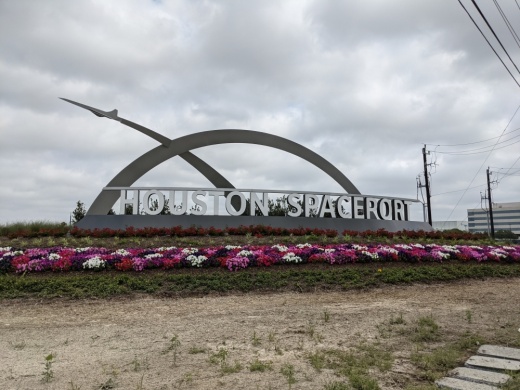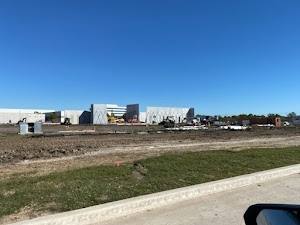“Houston is an international city, and we need to be the international hub for hypersonic and supersonic travel,” said Bob Mitchell, president of the Bay Area Houston Economic Partnership. “And we will be.”
Building out the Spaceport
The Houston Spaceport is a site for the launching and landing of suborbital, reusable launch vehicles as well as office spaces located on the southeast side of Ellington Airport. The spaceport is anchored by three major tenants.
Collins Aerospace began operations in September in a 125,000-square-foot facility. The company received a task order from NASA in December to begin manufacturing spacesuits to be used in low Earth orbits, Houston Spaceport Director Arturo Machuca said.
In the same building, the spaceport will also open 10,000 square feet of incubator space for startup companies to use.
Construction on a 106,000-square-foot facility for Axiom Space is 50% complete and expected to be completed in May. Axiom Space is building the first commercial space station, Mitchell said.
Intuitive Machines, which is building a lunar lander, has a 130,000-square-foot facility at the spaceport. Construction is 50% complete, and it is estimated to finish this summer.
“These anchor tenants are helping us attract other smaller companies ... looking at potentially setting up their facilities at the Spaceport so they can serve the needs of these larger companies,” Machuca said.
Additionally, Machuca said the Spaceport has two large prospects looking to join the Spaceport as well as a number of ongoing conversations with service providers looking at the Spaceport as a potential site. Building relationships and negotiating to get tenants takes months and even years, Mitchell said, but it has significant economic benefits for the region.
“There’s very easily north of $4 billion of contracts for these companies,” Machuca said. “So that’s really good for our community.”
Phase 2 of the Spaceport’s construction includes a couple of large additions to its infrastructure, Machuca said. Most significantly, a full-length taxiway at over 8,000 feet long will be constructed along Runway 4-22, which is located immediately northwest of the Spaceport. This will open up over 120 acres on the air side for development and connect the Spaceport to the airport operationally.
The Spaceport plans to select a contractor for the $150 million project by March. After an estimated 18 months of construction, it hopes to finish the new taxiway in 2024.
In October 2022, the land use plan for the Spaceport was completed. This includes plans for Phase 2, the development of the entire site, introducing retail, hotels, education expansion and infrastructure such as roads.
“I really feel like within the next three to five years, all 140 acres that’s currently developed for the Spaceport will be full, and we’ll be working on the next 140 acres,” Mitchell said.







